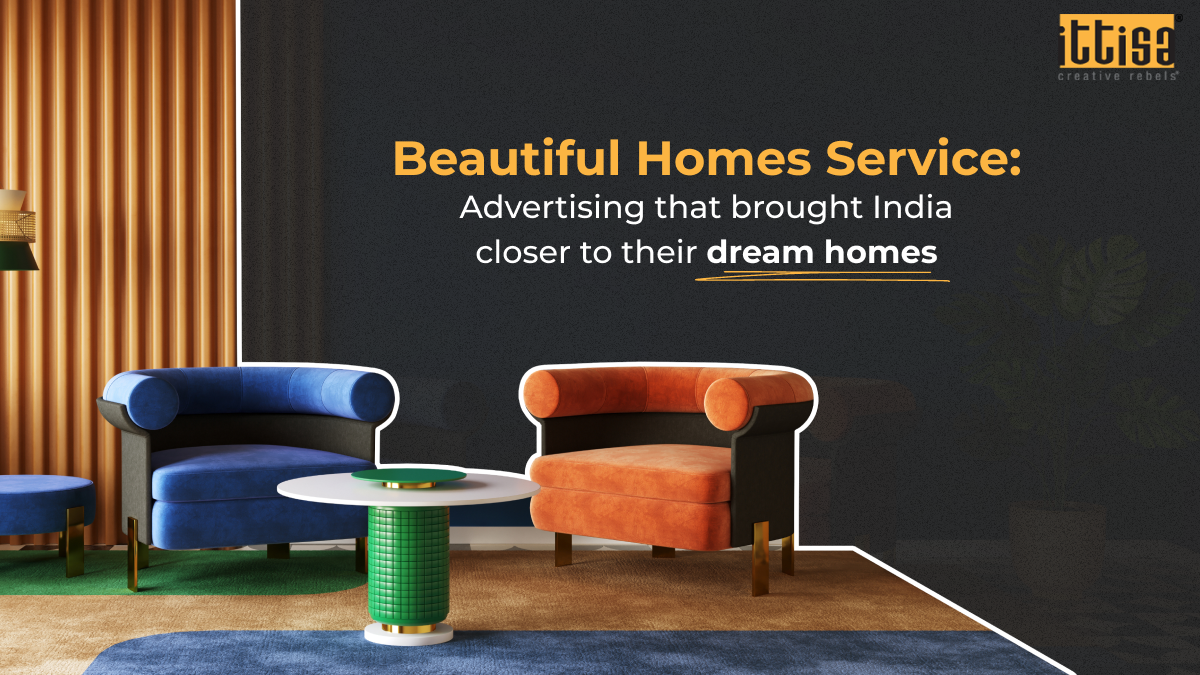February 05, 2024
5 Year Trends To Study Before Planning Your Next Women's Day Campaign
Are you gearing up to roll out your next Women’s Day campaign with the spirit of femininity, positivity and strength?
But before you start blasting creative energy into the conceptual void, let’s have a little heart-to-heart.
When it comes to crafting a campaign that resonates, hindsight can be your best pal. Think of it as digging through a treasure trove of ‘aha!’ moments from the past five years.
Together, we’ll embark on a bit of a time-travelling adventure, sifting through the sparkling sands of successful campaigns from the last half-decade.
We’re talking about scrutinising the big hits, the crowd favourites, and even those lovely underdog moments that snuck up on everyone’s social feeds and tugged at the heartstrings. Because there’s wisdom in those narratives and numbers that can turn your good campaign into a great one.
So let’s uncover the common threads that wove their way into the public’s favour and the unique gems that made each campaign shine. After all, you want your message to be that perfect blend of timely and timeless come next Women’s Day.
Popular Women’s Day Campaigns From Brands
1. Dove #ChooseBeautiful
Launched in 2015, this campaign stands as a powerful reminder and a challenge to the status quo of beauty standards. For decades, many women have felt pressured to conform to often unattainable beauty ideals presented in the media, which can lead to issues with self-esteem and self-perception. Dove’s campaign aimed to dismantle these barriers by inviting women to reevaluate their self-image in a more positive and empowering light. Through a mix of video content and interactive experiences, the campaign encouraged women to literally “choose” to walk through a door labelled “beautiful” rather than one labelled “average,” thereby making a symbolic statement about self-acceptance and the internal recognition of their beauty. By doing so, it sparked global conversations about beauty, self-worth, and the importance of defining beauty on one's terms. The underlying message was simple yet profound—the choice to feel beautiful is in our hands, and it can be made regardless of external pressures and expectations.2. Google #HerStoryOurStory
In 2018, Google recognised the imperative role that women play across various spectrums of life and sought to bring visibility to their contributions, which have historically been overlooked. The campaign served as a digital podium for both celebration and education, allowing users from around the globe to share anecdotes, accomplishments, and the profound impacts of women’s actions through various online platforms. By leveraging the ubiquitous nature of technology and social media, Google did not just offer a storytelling platform but, importantly, facilitated a communal space where the stories of women could be amplified for wider acknowledgement. Each narrative shared under the campaign shed light on the diversity of women’s experiences and the multifaceted roles they fulfil - from innovators and leaders to caretakers and revolutionaries. It underscored the ripple effect of individual stories coalescing into a shared history, or rather, ‘herstory’, thereby contributing to a more inclusive historical narrative that championed equality and recognition for women’s voices and experiences.3. Nike “Dream Crazier”
Launched in 2019, this campaign can be seen as more than just a promotional endeavour—it was a cultural statement about the potential and rightful place of women in sports. By featuring high-profile, groundbreaking female athletes, the campaign confronted the gender biases and clichés that label women as “crazy” for displaying emotion, ambition, or simply for aiming high in the traditionally male-dominated world of sports. It celebrated the achievements of these athletes, who have excelled in their respective fields and paved the way for future generations of women to pursue their dreams without boundaries. The phrase “Dream Crazier” echoed the sentiment that what may seem outlandish today can become tomorrow’s new standard if only women dare to dream it. Coupled with powerful visuals and inspirational storytelling, the campaign struck a chord with a global audience and reinforced Nike’s standing as a brand that supports the advancement and empowerment of women in sports.4. Bumble “All Our Moves”
In 2021, Bumble’s campaign was launched to celebrate the power of women and the impact they have on the world. Through this campaign, Bumble aims to highlight the diverse and extraordinary achievements of women across the globe, inspiring others to make their moves and create positive change in their communities. By showcasing women from different backgrounds, cultures, and fields, Bumble encourages inclusivity and empowerment, emphasising the importance of solidarity and support among women. The campaign encourages everyone to take part in the conversation, share their stories, and celebrate the resilience and strength of women everywhere. With its engaging and uplifting message, “All Our Moves” reflects Bumble’s commitment to fostering a community where women can feel empowered, supported, and celebrated. It’s a reminder that every small and big step taken by women contributes to a brighter and more inclusive future for all.5. Zivame #TheBraMatters
As part of its Women’s Day celebration in 2019, Zivame launched an inspiring new initiative, #TheBraMatters. This campaign was designed to bring to the spotlight the often-overlooked and underappreciated contributions that women make to society. It draws an insightful parallel with the humble bra that plays an integral part in a woman’s life yet often goes unnoticed. TheBraMatters is not just a campaign but a narrative that comes to life in the form of a short film. The film beautifully captures how women serve as a beacon of inspiration for those around them. The film underscores the fact that, much like the women it supports, a bra deserves recognition and appreciation for its significant role. The #TheBraMatters campaign by Zivame is a fresh and insightful way to honour women, their contributions, and the everyday items that support them.Common Themes That Connect These Campaigns
- Empowerment: This is a central theme where campaigns focus on empowering women, encouraging self-acceptance, and challenging stereotypes.
- Solidarity: Many campaigns highlighted the importance of solidarity among women, showcasing the support and strength found in female communities.
- Inspiration: Emphasising inspiring real-life stories of women’s achievements and resilience was a common strategy among effective campaigns.
- Actionable Hashtags: Campaigns often utilise powerful and actionable hashtags that easily spread across social media platforms.
Why These Campaigns Performed So Well
- Emotional Connection: These campaigns told stories that struck a chord emotionally, making the campaigns more shareable and relatable.
- Societal Relevance: They tapped into broader societal movements and aligned with the global push for gender equality and women’s rights.
- Authenticity: Brands that showed real commitment to women’s issues (beyond the marketing campaign itself) resonated with consumers, who are increasingly looking for authenticity.
- User Engagement: Encouraging user-generated content made these campaigns participatory, which increased engagement and personal investment.
Their unique aspects:
- Inclusivity and Diversity: Showcasing a diversity of women from all walks of life and various professions, contributing to a richer, more inclusive message.
- Multi-Platform Approach: Brands skillfully used a mix of social media platforms, traditional media, and on-the-ground events for a broader reach.
- Corporate Initiatives: Some brands took the opportunity to announce long-term commitments to gender equality in their corporate policies or philanthropic goals, aligning their branding with actual initiatives.
Trend influences:
Certain trends also influenced the design and execution of these campaigns. These include:- Socially Conscious Consumerism: Consumers increasingly expect brands to take a stand on social issues.
- Digital Storytelling: Advances in technology enabled brands to tell more compelling, multimedia stories.
- Intersectionality: A growing understanding that women’s experiences are shaped by other aspects of identity such as race, class, and orientation, leading to more nuanced campaigns.
- Content Virality: With the dominance of social media, campaigns were designed with shareability in mind to achieve virality. These campaigns’ success was a combination of strong messages that aligned with the global mood, authentic storytelling, social media savviness, and a genuine push for progress in gender equality issues
What To Keep In Mind When Planning Your Next Women’s Day Campaign
Begin with introspection and sensitivity towards the diverse tapestry of women’s experiences. Start by understanding the current socio-cultural climate and the unique challenges that women face, ensuring that your campaign is relevant and empathetic. Authenticity in storytelling will resonate more deeply than ever. Share real stories that inspire, educate, and provoke thought, moving beyond stereotypes to portray the multifaceted nature of womanhood. Your campaign should encourage participation and conversation, creating a space where voices can be heard and stories can be shared. Moreover, consider the legacy of your campaign; think about how it can leave a lasting impression or a foundation for continual support of women’s empowerment. Finally, keep your message consistent across all platforms but tailored in its delivery to engage meaningfully with different audiences. A successful Women’s Day campaign will leave individuals feeling seen, heard, and inspired to contribute to an ongoing, progressive narrative about women’s rights and achievements. When planning a Women’s Day campaign for 2024, identifying key trends is paramount to ensuring resonance and relevance. Here’s a friendly rundown of current trends and how they can inform your campaign theme:- Empowerment Through Technology: The increasing intersection of technology and women’s lives opens up novel avenues for empowerment. Consider how you can incorporate digital literacy or AI to support women’s advancement in your theme.
- Sustainability and Climate Action: With a growing emphasis on environmental stewardship, a campaign that celebrates women’s contributions to sustainability practices and climate advocacy could strike a chord
- Health and Well-Being: The global focus on mental and physical health, heightened by the pandemic, suggests a theme that highlights and supports women’s health initiatives, which would be both timely and supportive.
- Entrepreneurship and Leadership: The rise of female entrepreneurship and an emphasis on diverse leadership give you ample space to create a theme celebrating female innovators and leaders who are breaking glass ceilings.
- Intersectionality: Recognition of the multiplicity of women’s experiences based on race, sexuality, and socioeconomic backgrounds points to a campaign that is inclusive and rich in varied narratives.
- Work-life Harmony: As remote work becomes more common, themes around achieving balance and dismantling the “always-on” culture could resonate deeply.
- Equality in the Spotlight: With movements like pay parity still going strong, campaigns pushing for continued progress in gender equality and social justice remain highly relevant.



